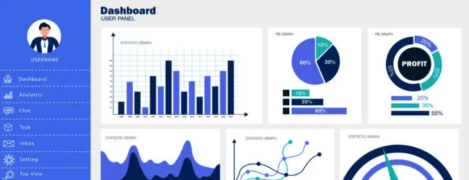Tracking Customer Touchpoints Effectively

In the world of SaaS marketing, every customer interaction tells a story. Whether it’s a click on a LinkedIn Ad, time spent reading a blog, or a sign-up from a Google Search Ad, these touchpoints are the building blocks of your marketing attribution framework. Tracking them accurately is critical to understanding how your channels contribute to your goals.
In this article, we’ll explore the tools, techniques, and best practices to effectively track customer touchpoints for herdr.io. You’ll learn how to capture data from every interaction, centralize it for analysis, and avoid common tracking pitfalls.
What Are Customer Touchpoints?
Customer touchpoints are the interactions your audience has with your brand throughout their buyer journey. These include:
- Paid channels: LinkedIn Ads, Facebook Ads, Google Search Ads.
- Owned channels: Website blog, email newsletters, Google My Business profile.
- Organic interactions: Search engine visits, social shares, or newsletter sign-ups.
Tracking touchpoints is the foundation of any marketing attribution strategy. It allows you to analyze how different interactions influence customer behavior, from initial awareness to conversion.
1. Establishing Clear Tracking Goals
Before diving into tools, define what you need to track and why. Align your goals with the stages of the buyer journey and the marketing funnel.
Example Goals for herdr.io:
- Track impressions and clicks for LinkedIn Ads to measure awareness.
- Capture blog engagement metrics (e.g., page views, time spent) to assess consideration.
- Measure conversions from Google Search Ads and newsletters to analyze decision-stage impact.
By focusing on specific goals, you can streamline your tracking setup and avoid data overload.
2. Implementing Tracking Tools
Essential Tools for herdr.io:
- Google Analytics 4 (GA4)
- What it tracks: Website traffic, user behavior, and conversions.
- Setup tip: Configure conversion goals like trial sign-ups or newsletter subscriptions.
- UTM Parameters
- What it tracks: Specific campaign performance across channels.
- Setup tip: Add UTM codes to all links in paid ads, emails, and social posts.
- Example:
https://herdr.io/blog?utm_source=linkedin&utm_medium=paid&utm_campaign=awareness
- CRM Integration
- What it tracks: Customer interactions from lead capture to sales.
- Tools: HubSpot, Salesforce, or other CRMs that sync with marketing data.
- Advertising Platform Analytics
- What it tracks: Channel-specific metrics like ad impressions, CTR, and CPA.
- Tools: LinkedIn Campaign Manager, Facebook Ads Manager, Google Ads Dashboard.
- Heatmaps and Session Recordings
- What it tracks: On-site behavior (e.g., clicks, scroll depth).
- Tools: Hotjar, Crazy Egg.
- Marketing Automation Platforms
- What it tracks: Email engagement and automation workflows.
- Tools: Mailchimp, ActiveCampaign.
3. Centralizing Touchpoint Data
To gain a holistic view of your customer journey, integrate all touchpoint data into a centralized system.
Steps to Centralize Data:
- Connect GA4 to your ad platforms: Pull LinkedIn Ads, Google Ads, and Facebook Ads data into GA4.
- Integrate your CRM: Sync lead and customer data with marketing analytics.
- Use a data visualization tool: Platforms like Looker Studio (formerly Google Data Studio) or Tableau can aggregate data from multiple sources for easy analysis.
Centralization enables you to see how each channel and interaction contributes to your goals without needing to jump between tools.
4. Tracking Multi-Device and Cross-Channel Journeys
Modern customers interact with brands on multiple devices and channels, making it crucial to connect these fragmented touchpoints.
Tips for Multi-Device Tracking:
- Enable cross-domain tracking in GA4: This ensures sessions from your blog, main website, or landing pages are linked.
- Use user IDs in your CRM: Assign unique identifiers to each lead or customer to unify their journey across devices.
- Leverage attribution platforms: Tools like Ruler Analytics or Segment specialize in unifying touchpoints across channels.
5. Avoiding Common Tracking Pitfalls
Pitfall 1: Missing UTM Codes
- Fix: Use a UTM builder tool and ensure all campaigns have properly tagged URLs.
Pitfall 2: Data Silos
- Fix: Regularly integrate your CRM, ad platforms, and website analytics.
Pitfall 3: Overcomplicated Tracking
- Fix: Focus on the metrics that matter most, aligned with your KPIs.
Pitfall 4: Inconsistent Attribution Settings
- Fix: Ensure that all platforms use the same attribution windows and models for consistency.
6. Monitoring and Validating Data
Set up regular audits to ensure your tracking remains accurate and actionable.
Checklist for herdr.io:
- Test links with UTM parameters to confirm proper tracking in GA4.
- Cross-check ad clicks with corresponding website traffic.
- Validate conversion goals (e.g., trial sign-ups) by testing the funnel yourself.
7. Turning Data into Insights
Tracking is only valuable if it leads to actionable insights. Use your data to:
- Identify top-performing channels: Are LinkedIn Ads driving the most awareness?
- Spot weak points in the funnel: Are visitors dropping off after engaging with blogs?
- Optimize budgets: Allocate resources to high-impact channels.
Next Steps: Analyzing Attribution Data
With touchpoints effectively tracked, the next step is analyzing your attribution data to uncover trends and insights. In our next article, we’ll explore how to interpret attribution reports, identify actionable patterns, and refine your strategy.
Read Next: Analyzing Attribution Data and Driving Decisions →
Final Thoughts
Tracking customer touchpoints is the foundation of an effective marketing attribution strategy. By implementing the right tools, centralizing data, and avoiding common pitfalls, you’ll gain a clear view of how your channels work together to drive results for herdr.io.
Remember, tracking isn’t a one-time setup—it’s an ongoing process that evolves as your campaigns and customer journeys grow more complex. Stay diligent, and your efforts will pay off with actionable insights and measurable success.







